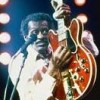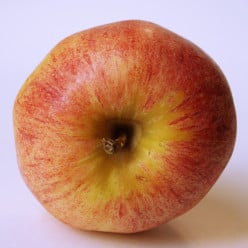guitar soloing in c major
I will try to explain how to play solo with easy.
for the beginning I will start on the scale of C major
(C-d-e-f-g-a-b-c). before I explain the steps of the tone,
I will explain the basic formula of the major scale itself :
1 - 1 - 1/2 - 1 - 1 - 1 - 1/2
thing to remember this formula because is very important for you to play a solo with your instrument.
and now, I will now explain how the use of the formula is:
1 = distance from C to D> Major
1 = distance from D to E> minor
1/2 = distance from E to F> minor
1 = distance from F to G> Major
1 = distance from G to A> Major / Dominant 7
1 = distance from A to B> minor
1/2 = distance from B to C> minor / m7b5
so when we play in the major scale we can use the formula, the above example is when we use the scale C (do = C).
and the conclusion you can play solo in C using the results obtained from the formula (c, d, e, f, g, a, b, c).
and for the keys that you can use are:
C major - D minor - E minor - F Major - G major / dominant - A minor - B minor/m7b7
Thus is the music theory to play a solo that I can give to you, hopefully useful for you.Thanks for the advice! I believe what you're describing is usually called the "vertical approach" (http://myguitarsolo.com/improv_tips.htm). It's good when a soloist can not only improvise over the current chord, but anticipate the next chord using passing tones, etc. That way, you create a "flow" so that the whole solo is like one coherent statement. I still find that difficult to do; it takes a lot of dedication and practice to learn.
I am unclear on your list--the one starting with:
"1 = distance from C to D> Major..."
I know that "1" is a whole step and 1/2 is obviously what it looks like, but while the distance from C to D is major (specifically a major 2nd), the distance from D to E is the same, not "minor".
I believe the labels (Major, minor, etc.) at the end of each entry on your list reflects the type of chord rather than the interval. That might not be clear to some who see your list.
Good post otherwise!
Related Discussions
- 26
Music Theory for Beginners - Intervals
by Dgerrimea 13 years ago
This is a hub of mine of the same name, reposted here to get some music theory discussion happening.What is an interval?Intervals are the building blocks of scales, chords, riffs, solos, motifs, melodies, and of music itself. An interval is the distance between two notes.Look at a piano keyboard....
- 12
What is the Difference Between a Scale and a Mode?
by 6 String Veteran 13 years ago
The answer to this question has evaded many a student (and teachers) of music.What's your answer?-6SV
- 9
Usefulness of College Minors
by Jeremy Gill 6 years ago
Hello all, does anyone have any experience with the usefulness (or lack thereof) of a college minor? For instance, have you ever convinced an employer to hire you based on the minor and not the major?
- 10
I would like to know your favorite guitar solo, eh?
by zackdeck 12 years ago
I would like to know your favorite guitar solo, eh?
- 2
what are the elements that made up the melody?
by Hermoso 12 years ago
what are the elements that made up the melody?
- 5
why is d minor the saddest key?
by Ren Chin 13 years ago
why is d minor the saddest key?









